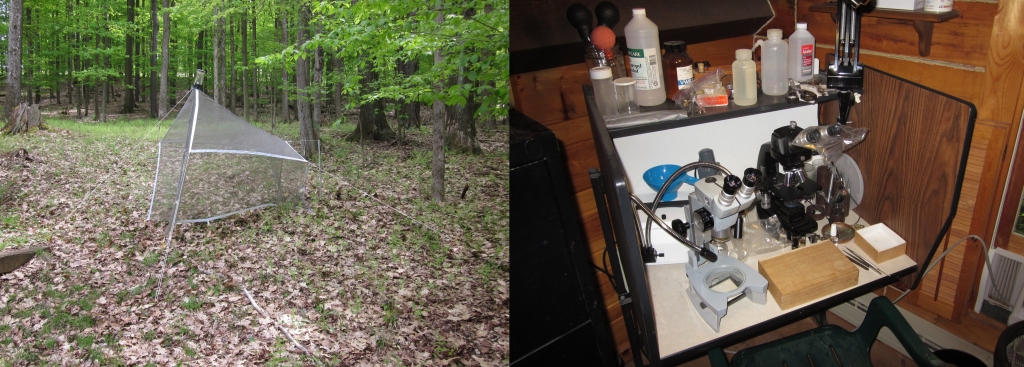Yet Another Literature Citation
May 4, 2013I added another literature citation, namely Gabritschevsky (1926). This reference isn't really new to me; it's something I've had a copy of for a long time. I just hadn't read it until this week. Yet as far as I can tell it is one that has never been mentioned in any of the various asilid bibliographies. It was published in the Biological Bulletin; I seem to remember that that journal may consist of translations of papers that were first published in Russian. The paper itself is notable for species-name misspellings as well as for one species for which the name is completely wrong (Dasyllis dithoracica). The main emphasis is on color convergence between bumblebees and flies in the syrphid genus Volucella. The way in which the thoracic and abdominal patterns are diagrammed for both flies and bees is instructive and possibly eventually can serve as a model for an updated analysis of color patterns within Laphria s. str. The full reference is:
Gabritschevsky, E. 1926. Convergence of coloration between American pilose flies and bumblebees (Bombus). Biol. Bull.. 51(4):269-886.(Divides American Laphria [Dasyllis at the time] and Bombus into three pattern groups, the first consisting of species in the eastern United States, the second also of eastern species, and the third of species in the Rockies (referred to as the Colorado area); p. 273, the first group, consisting of the robber flies Dasyllis lata, Dasyllis marquarti [sic], Das. sacraton [sic], and Das. champlaini, sharing a characteristic yellow-and-black abdominal pattern with six species of Bombus--namely, B. vagans, B. affinis, B. impatiens, B. separatus, B. bimaculatus, and B. perplexus; the second group, consisting of the robber flies Dasyllis dithoracica [sic] and Das. grossa, sharing a slightly different yellow-and-black abdominal pattern with three species of Bombus--namely B. pennsylvanicus, B. auricomus, and B. terricola; and last, on p. 275-276, 279, the third pattern group, consisting only of Dasyllis fernaldi, sharing red on the dorsum of the abdomen with twelve species of Bombus--namely, B. sylvicola, B. huntii, B. melanopygus, B. eduardii, B. ternarius, B. centralis, B. borealis, B. gelidus, B. flavifrons, B. rufocinctus, B. kirbuellus, and B. appositus. Additionally on p. 277, Dasyllis lata var. a, D. champlaini, D. macquarti, and D. grossa are noted for having matching bands of color to several bumblebee species which mostly are not sympatric. The thoracic and abdominal color patterns of D. unicolor, D. insignis, D. posticata, D. divisor, D. cinerea, D. sp. ?, D. flavicolla [sic], D. virginica, D. grossa, D. lata var. a, D. champlaini, D. lata var. b, D. marquarti [sic], D. sacraton [sic], D. dithoracica var. a [sic], D. dithoracica var. b [sic], D. grossa var. a, and D. fernaldi are diagrammed in Plate II (p. 282, caption; p. 283, graphic). Dasyllis is consistently misspelled as "Dasylus" throughout the caption.)
Given that this paper is about potential mimicry, I thought I should mention two more recent papers on bumblebees which I have NOT added to the bibliography, because they do not mention robber flies. Never the-less they are both germane to the subject of mimicry in Laphria s. str., in several ways. I find the paper on pubescence particularly thought provoking.
Stiles, E. W. 1979. Evolution of color pattern and pubescence characteristics in male bumblebees: automimicry vs. thermoregulation. Evolution 33(3):941-957.
Plowright, R. C., and Owen, Robin E. 1980. The evolutionary significance of bumble bee color patterns; a mimetic interpretation. Evolution 34(4):622-637.


 Digg
Digg
 Facebook
Facebook
 StumbleUpon
StumbleUpon
 LinkedIn
LinkedIn
 Twitter
Twitter
 Email
Email